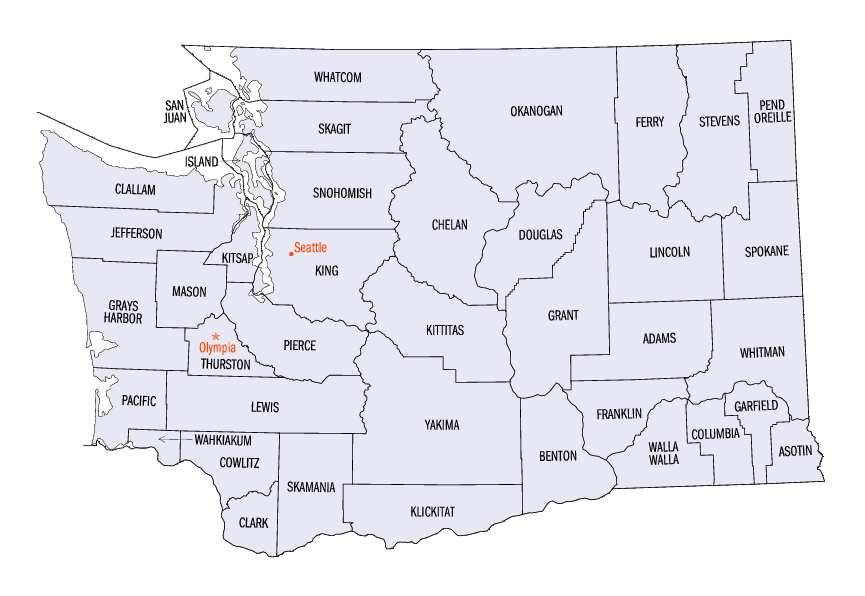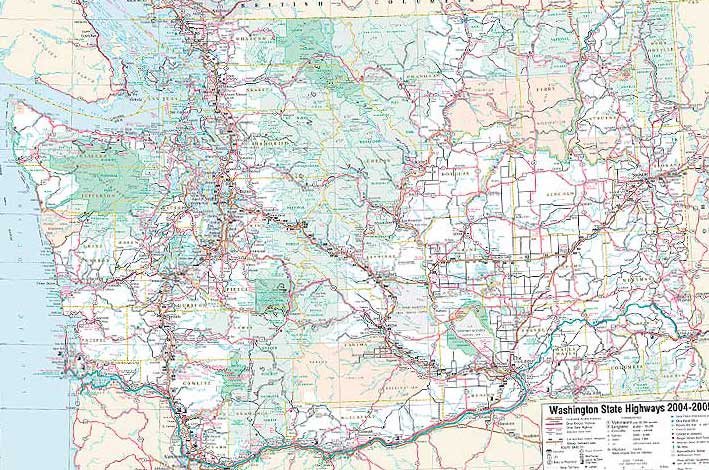Blue Highways: Maryhill, Washington
Unfolding the Map
We stop for a walk with William Least Heat-Moon (LHM) in Maryhill, continuing to ponder on some large questions of life and time. In this case, why do we bother to try to realize dreams that crumble and blow away over time? Sounds depressing? I don't think so. I think it just is. Navigate over to the map to pinpoint Maryhill.
Book Quote
"Sam Hill had many plans - some shrewd, some cockamamie - and he had money to try them. His plan for Maryhill, Washington (first called Columbus), was to find a narrow zone where coastal rains met desert sun; that belt, he believed, would be an agricultural Eden....He talked some Belgian Quakers into considering settlement, but when scouts for the group came, they saw and left. To them, Hill's ideal zone was the fiction of a creative road engineer more adept at theory than practice when it came to agronomy and climatology. And they were right. The town lay in the rain shadow of the Cascades.
"Hill continued building the big and costly stone manor, often called, with some accuracy, 'Maryhill Castle.' At one time he said it was for his wife Mary, but she apparently refused even to visit the place....
"....But Hill died....Hill's dream had passed, and now, but for the museum, monument, and the ruined rock walls, the desert slope was as vacant as ever."
Blue Highways: Part 6, Chapter 10
 The Maryhill Museum in Maryhill, Washington was built originally as a mansion by Sam Hill. Photo by "Cacophony" at Wikimedia Commons. Click on photo to go to host site.
The Maryhill Museum in Maryhill, Washington was built originally as a mansion by Sam Hill. Photo by "Cacophony" at Wikimedia Commons. Click on photo to go to host site.
Maryhill, Washington
What happens to our plans, our dreams, and when we realize them, our creations? I have been thinking a lot about his as I have been writing these posts in this blog. LHM's account in this chapter of Blue Highways about Sam Hill and his ideas have brought these thoughts back to me recently.
I have to frame this question by first asking: What's the point? What's the point of creating things, especially if they will end up like Sam Hill's vision of Maryhill, Washington? He had great plans. Plans that were, as LHM says, "some shrewd, some cockamamie." He put his plans into effect. He built a large "castle" for his wife. He hoped to build a settlement that made use of what he thought might be the perfect meeting place of aridity and humidity for an agricultural wonderland. Instead, the settlement didn't happen. The climate was not right for agriculture after all. His wife didn't want to go anywhere near Maryhill. All that is left, according to LHM, are a few buildings, a ghost town, and a facsimile of Stonehenge up the hill. What was the point of that?
What was the point of the great civilizations whose remnants are crumbling under our feet over the millenia? The Hittites and Babylonians. The Greeks, the Romans, the Egyptians. The Mayans, Aztecs and Inca. The Cahokia Mound Builders, the Chacoans and the Mesa Verdeans. The Mongols and the early Chinese empires. What was the point of their civilizations if now all that is left is what can be saved through archeology?
Percy Bysshe Shelley summed up the hubris of pride and of civilization in a memorable way in what is one of my favorite poems of all time, Ozymandias.
I met a traveller from an antique land
Who said: Two vast and trunkless legs of stone
Stand in the desert. Near them, on the sand,
Half sunk, a shattered visage lies, whose frown,
And wrinkled lip, and sneer of cold command,
Tell that its sculptor well those passions read
Which yet survive, stamped on these lifeless things,
The hand that mocked them and the heart that fed:
And on the pedestal these words appear:
"My name is Ozymandias, king of kings:
Look on my works, ye Mighty, and despair!"
Nothing beside remains. Round the decay
Of that colossal wreck, boundless and bare
The lone and level sands stretch far away.
Percy Bysshe Shelley
Rosalind and Helen, a modern eclogue, with other poems
1819
I am but a bit player in these things, but I have been realizing that even my small contributions to our current civilization are but tiny blips that will burn briefly and then die. Living in the present, it is easy for us to believe that things that we produce are timeless - our writings, our art, our music. Yet only a fraction of the literature and art that has been produced through the millenia of human existence has survived. How many wondrous works of art might there have been that we have missed? How many amazing pieces of literature have been lost over time? What lost symphonies or masterworks of song have had their notes briefly sound and then disappeared?
As I write these lines that will be saved electronically on the internet for you to read, I am conscious of a number of things that could happen. They could be lost due to a catastrophe with the server. I could run into dire straights and find that I cannot pay my bill to keep my account on this provider. As we move forward in time, perhaps the provider might not survive and go out of business, taking my posts with it. As we move forward through years, decades, centuries, how do we know that the internet will survive beyond a brief flowering? How will we know that our civilization will survive - civilizations up to now, even those that seemed in the midst of their greatness to be guaranteed to last forever, eventually fall and die away.
So why do I, the Sam Hills, the architects of civilizations dream and create works that will eventually dissolve in the relentless march of universal time and movement?
I can only answer for myself. I wite these posts because it pleases me. I also write the occasional poem, make Facebook posts and dream of writing a book someday because it is my one little sound in the vast cacophony of the universe, my one word in the encyclopedia of creation, my one spark of energy to add to the immense energy of the wider cosmos. Of course, I would love for my creations, for my small part to play in the ongoing history of humanity, to last and have some relevance. But that is just my bit of hubris. What I create may be relevant or not, but eventually my creations will disappear and my voice will fade. Just like Maryhill, the great civilizations, and all our arts, literature and music will eventually follow Ozymandias and crumble forgotten into the infinite and unrelenting cosmological desert. Other towns, civilizations, arts, literatures and musics will follow and in their turn disappear and be replaced. And that's just fine, and just as it's meant to be.
Musical Interlude
I had a hard time picking this song. I looked up music that might have something about Ozymandias, and though Jefferson Starship, the Sisters of Mercy, and Qntal all had songs with that name (and I am really partial to the Jefferson Starship song), I kept coming back to this song by Midnight Oil, even though it really has nothing to do with what I'm writing about. I even went to songs about time's passage, and looked briefly at another song I like, Steely Dan's Black Friday. But this kept popping back in my head. So, if it's supposed to be in this post, it will be in this post. And I think it can fit, because when all is said and done, isn't life and all our creations like a dream that will one day fade and end? Enjoy Dreamworld!
If you want to know more about Maryhill
Maryhill Museum of Art
Maryhill State Park
Sam Hill's Stonehenge
Washington Stonehenge
Wikipedia: Maryhill
Next up: Roosevelt, Whitcomb and Paterson, Washington




 Friday, November 11, 2011 at 3:46PM
Friday, November 11, 2011 at 3:46PM






